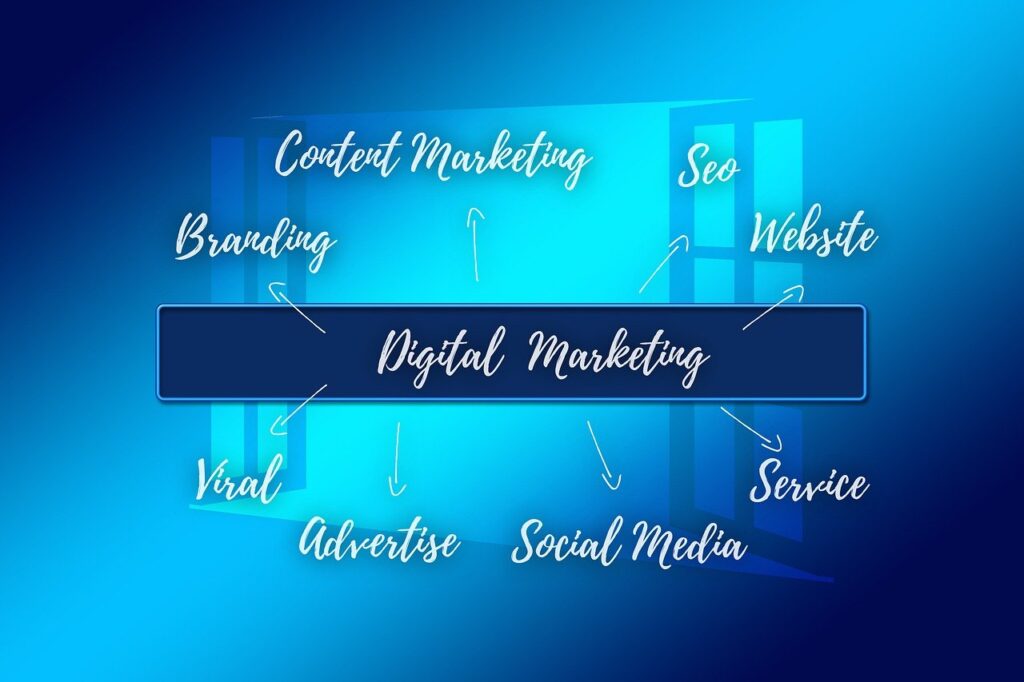When it comes to standing out in today’s crowded marketplace, a strong brand positioning strategy isn’t just nice to have. It’s the key to building a loyal customer base, strengthening brand recognition, and contributing to long-term success. For small business owners, knowing how to position your brand effectively can mean the difference between thriving and struggling in the competitive landscape. A brand essence chart can serve as a strategic tool to organize and clarify the core elements of your brand.
This guide dives into key strategies, actionable steps, and real-world examples to help you create a brand that captures attention and leaves a lasting impression.

What is Brand Positioning?
Definition and Importance
Brand positioning is the process of creating a unique image or identity for your brand in the minds of your target customers. It establishes what your brand represents, how it compares to competitors, and why customers should choose you over others.
An effective brand positioning strategy revolves around a deep understanding of your market, target audiences, and competitors. By clearly defining your place in the market, you can increase brand loyalty, boost customer retention, and drive revenue.
Why is Brand Positioning Important?
- Differentiation in a Crowded Market: A strong positioning strategy sets your brand apart from competitors.
- Builds Trust and Loyalty: Customers are drawn to brands that resonate with their values and needs.
- Drives Competitive Advantage: Knowing your unique value proposition helps you corner a specific market segment.
- Aligns with Core Beliefs and Values: If a brand stands for a particular cause, it should be clearly communicated to the target audience to strengthen brand identity and connection.

Types of Brand Positioning Strategies
Customer Service Positioning Strategy
- Position your brand as synonymous with exceptional customer service.- Example: Nordstrom has built its reputation on outstanding customer care, justifying higher prices by creating a premium experience for its shoppers.
Price-Based Positioning Strategy
- Highlight your affordability as a core selling point.- Example: Walmart’s “Everyday Low Prices” campaign appeals to budget-conscious shoppers, making affordability their primary differentiator.
Convenience-Based Positioning Strategy
- Promote the ease and time-saving value your product or service provides.- Example: Amazon Prime leverages convenience through rapid delivery options, becoming indispensable to busy consumers.
Quality-Based Positioning Strategy
- Showcase the high quality and superior craftsmanship of your offerings, catering to customers who are willing to pay a premium.- Example: Rolex is a shining example of quality-based positioning, emphasizing its precision, premium materials, and luxury craftsmanship.
Differentiation Strategy
- Make your brand stand out through innovation, design, or unique features.- Example: Dyson revolutionized vacuum cleaners with cutting-edge technology, positioning itself as both premium and innovative.
Defining your target customer is crucial to effectively communicate the unique value proposition of your brand, ensuring it resonates with the specific audience's needs.

Understanding Brand Positioning
Brand positioning is the process of creating a unique identity for your brand in the minds of your target audience. It involves differentiating your brand from competitors and establishing a distinct image, voice, and message that resonates with your target market. Effective brand positioning is crucial for building brand loyalty, driving business growth, and establishing a strong market presence.
Looking for an experienced Wordpress Development company?
When you position your brand effectively, you create a memorable impression that sticks with your target customers. This not only helps in attracting new customers but also in retaining existing ones, fostering brand loyalty. A well-positioned brand can command a premium price, enjoy higher customer retention rates, and achieve a competitive edge in the market.
Customer Service Positioning Strategy
A customer service positioning strategy involves presenting your brand as a beacon of exceptional customer service. This strategy is particularly effective for companies that offer high-quality products or services and want to differentiate themselves from competitors based on their customer service. By emphasizing customer service, brands can create a positive emotional connection with their target audience and establish a loyal customer base.
For instance, Amazon’s customer service strategy is built around its “we’re here to help” approach, setting a high standard in e-commerce customer service. Similarly, Nordstrom is often celebrated for its outstanding in-store customer service, which has significantly contributed to its loyal customer base. By focusing on customer service, these brands have managed to create a strong emotional bond with their customers, leading to increased brand loyalty and customer retention.
Price-Based Positioning Strategy
A price-based positioning strategy involves showcasing your brand as the most affordable option in the market. This strategy is effective for companies that offer affordable products or services and want to attract a large customer base. By emphasizing price, brands can create a competitive advantage and establish themselves as the go-to option for budget-conscious consumers.
For example, Walmart’s “Everyday Low Prices” campaign provides consumers with affordable options, making it a popular choice for budget-conscious shoppers. Similarly, AliExpress offers a vast range of products at competitively low prices, appealing to price-sensitive customers. However, it’s essential to note that a price-based positioning strategy can come with risks, such as giving prospects the impression of lower production quality. Therefore, it’s crucial to balance affordability with perceived value to maintain a strong brand reputation.

Creating a Unique Brand Positioning Strategy
Step 1: Determine Your Current Brand Positioning
Evaluate how your brand is currently perceived by your target customers. Ask yourself:
- How do my customers describe my brand?
- Am I seen as a niche player or a market leader?
Brand positioning statements are crucial internal documents that guide external marketing campaigns.
Step 2: Identify Your Competitors
Understand the competitive landscape to pinpoint gaps and opportunities. Who are your biggest competitors, and how is their brand positioned?
Step 3: Conduct Competitor Research
Analyze what your competitors are doing right and where they fall short. Tools like competitor analysis reports can help you carve out your niche and avoid common pitfalls.
Step 4: Identify Your Unique Value Proposition (UVP)
Your UVP is what makes your brand unique. It’s the core reason customers should choose you over others. For example, Airbnb’s UVP revolves around “Belong Anywhere,” offering travelers a more personal and intimate experience.
Step 5: Build a Brand Positioning Framework
A framework helps structure your approach to brand positioning. This involves defining your mission, strengths, target market, and tone of communication.
A brand essence chart can serve as a visual framework that helps articulate your brand's unique attributes, benefits, and emotional impact.

Crafting a Strong Brand Positioning Statement
A clear and concise brand positioning statement outlines your purpose and what makes you stand out in the eyes of your customers. Brand positioning statements are crucial internal documents that guide external marketing campaigns.
The Three Cs of a Strong Statement
- Clarity: Ensure your message is easy to understand.
- Conciseness: Avoid fluff; get straight to the point.
- Consistency: Use the same messaging across all channels.
Use this positioning statement template:
- For [target audience], [brand/product] is the [category] that [key benefit], because [proof point].
Example for a small business cleaning service:
“For young professionals, CleanEase is the cleaning service that guarantees a spotless home in just two hours because we use top-notch eco-friendly products.”

Communicating Your Brand Positioning
Connect Emotionally with Customers
Humans make decisions based on emotions. Forge an emotional connection by showing how your brand adds value to their lives.
Reinforce Differentiation in Every Interaction
Whether through your sales team or marketing efforts, ensure your unique value is consistently communicated. For instance, Tesla’s direct sales model emphasizes its innovation and exclusivity.
Provide Value Beyond the Core Product
Successful brands go beyond just selling a product. Apple, for example, fosters a community around creativity and innovation, deepening loyalty among users.
Align Your Brand Across All Touchpoints
Consistency is key when it comes to branding. From your website to customer service, ensure every interaction reflects your brand’s personality and messaging.

Brand Positioning Examples
- Spotify has positioned itself as the go-to streaming service for music lovers, with its curated playlists and user-friendly interface.
- Kleenex, through its iconic branding, has become synonymous with tissues, demonstrating the power of top-of-mind brand positioning.
- Blue Nile showcases premium-quality gemstones and jewelry with transparent pricing and craftsmanship, appealing to discerning buyers.
- Famous brand positioning examples from leading B2B and SaaS companies show how successful brands leverage market positioning, storytelling, and identity to create effective brand positioning statements.

Mastering Brand Positioning
To ensure long-term brand positioning success, keep the following in mind:
- Adapt to Evolving Market Dynamics: Consumer behavior and market trends change rapidly. Stay agile by continuously evaluating your positioning.
- Gather Customer Feedback: Use customer input to refine your approach and build a loyal customer base.
- Measure Success: Use KPIs like customer retention rate and brand equity to determine the effectiveness of your strategy.

Take the Next Step Toward Brand Positioning Success
A strong brand positioning strategy can elevate your business to new heights. If you’re ready to stand out, Priceless Consulting is here to help. Contact us today for expert web development and SEO services tailored to amplify your brand’s online presence.
Share this post with fellow business owners and start positioning your brand for success!
Learn More About Brand Positioning
Enhance your knowledge of brand positioning by exploring these valuable resources:
- Guide to Crafting a Resilient Positioning Strategy (Forbes): Insights from industry leaders on how to create a strong, compelling brand position.
- The Science of Branding (Harvard Business Review): Explore the critical role of branding in driving business success and building customer loyalty.
- 10 Practical Tips for Brand Positioning (Entrepreneur): Actionable advice to help your brand stand out in a competitive marketplace.
- Understanding the Psychology of Brand Positioning (Psychology Today): Learn how human behavior influences brand perception and consumer decision-making.
- Mastering Brand Differentiation (Inc.): Discover strategies to differentiate your brand effectively and carve out a unique market space.
- Brand Positioning Case Studies (AdAge): Real-life examples of successful brand positioning from leading companies around the globe.
- The Role of Storytelling in Brand Positioning (Fast Company): Understand how storytelling can shape and strengthen your brand identity.
- Key Metrics to Measure Brand Positioning Success (MarketingProfs): Learn about the essential metrics that gauge the effectiveness of your brand positioning efforts.
- Future Trends in Brand Positioning (McKinsey & Company): Insights into emerging trends and how to stay ahead in an evolving market landscape.
These trusted resources will empower you with the knowledge and tools to refine your brand positioning strategy and achieve your business goals.







